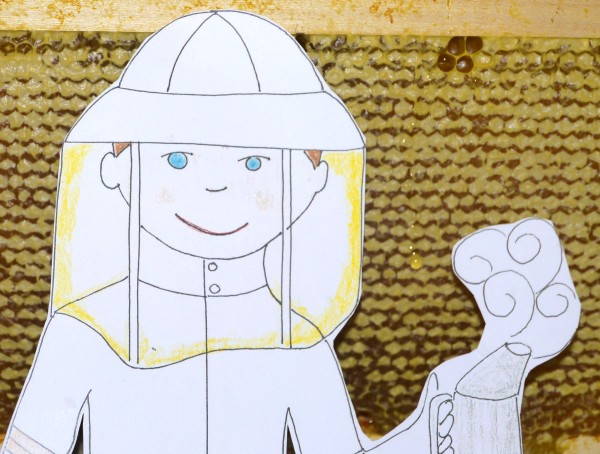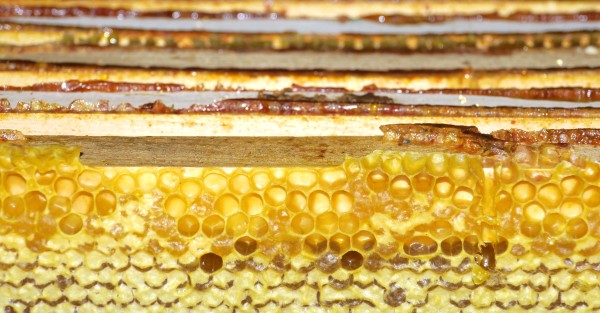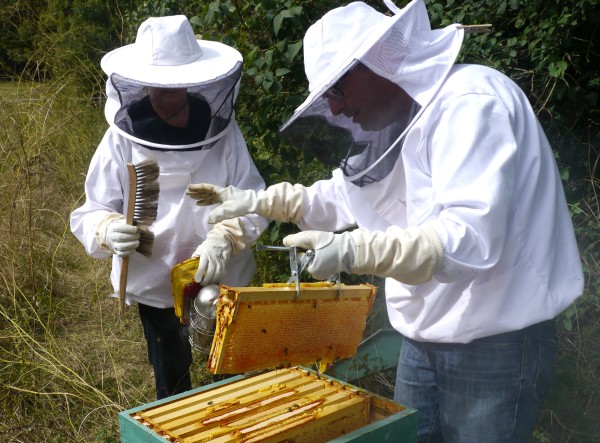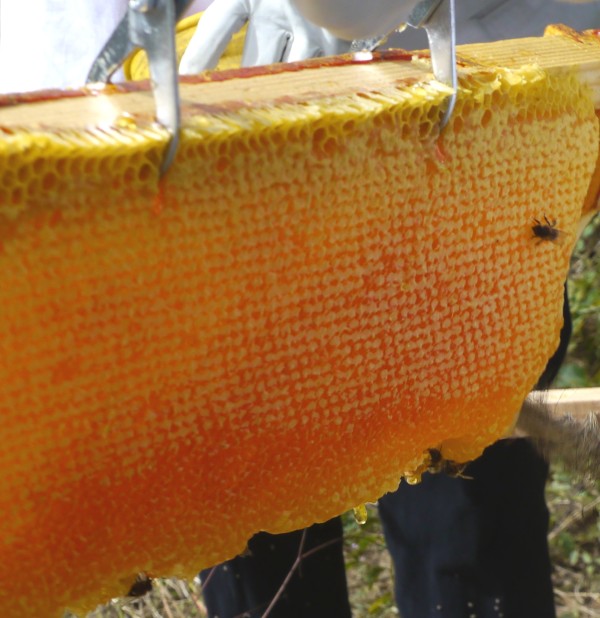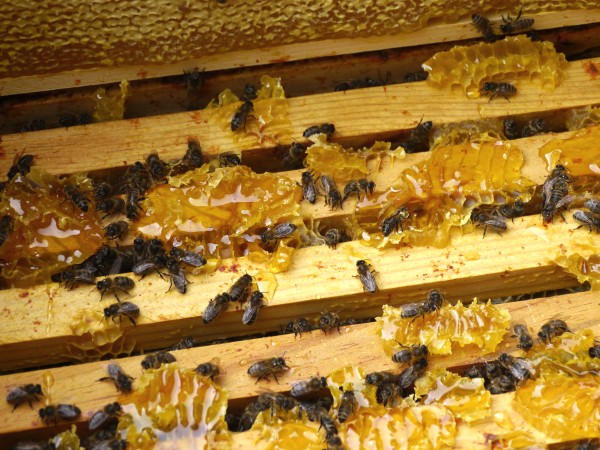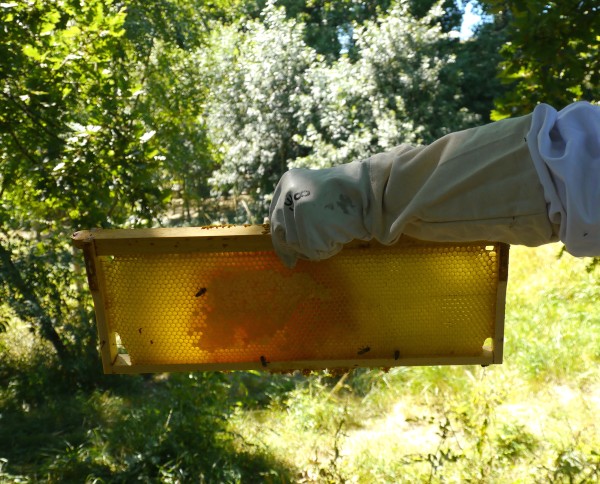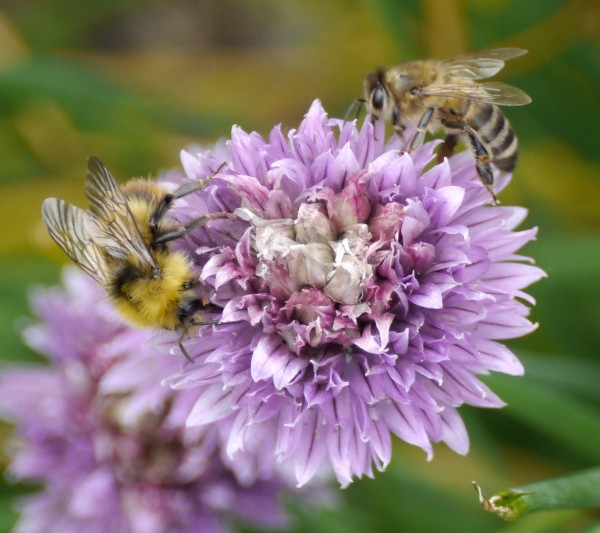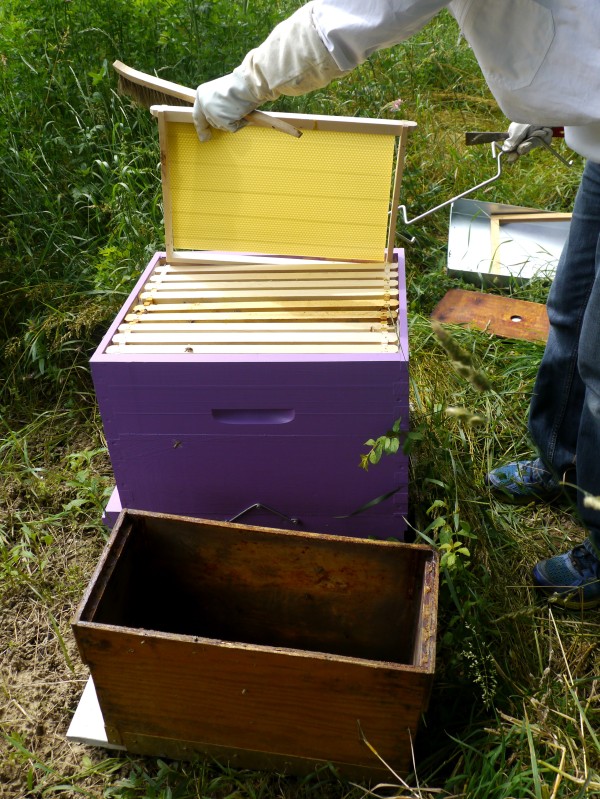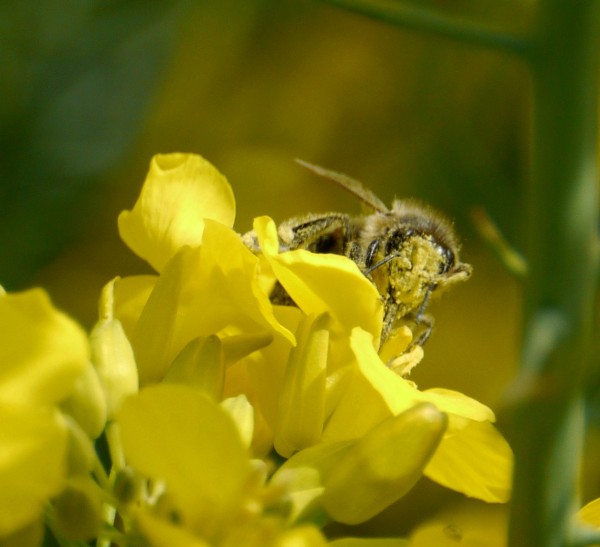Howdy – its Flat Stanley again, reporting in after an exciting day’s honey extraction! We collected the honey from the hives of Dallas and Jean-Philippe – three hives in all. I was asked to help out in the Extracting Room.
Firstly we had to make sure that all the equipment was spotlessly clean. It is after all a year since it has been used. You see me here atop the centrifugal extractor, surrounded by uncapping trays, buckets, sieves and honey tanks.
All was fine and dandy, so we installed all these bits and pieces in the so called Extracting Room. When Dallas’ house was used as a farm in the olden days, this room was part of the area where they kept cows and horses. There is a massive vat in the corner which some say was for water for the animals, others say it was for wine making – now its used for showering off the dogs. Folks also say that this room is haunted!
The honey extraction was a big success, especially for Jean-Philippe, who had over 30 kilos of beautiful honey. I watched as the honey cells were uncapped and then spun to extract the golden juice.
One thing we did notice on one of Dallas’ frames was a patch of paler, crystallised honey, which must have originated from the oil seed rape.
This OSR or colza honey was set too hard to extract – all we could do was leave it and the bees would recuperate it when we leave the frames out for them to clean up.
After we had finished the extraction and tidied up, washed all the equipment and tried to make the floor less sticky, we all sat down with some ice-cold beer and a platter of fresh bread and mild goats cheese, drizzled of course with super fresh honey – it was scrumptious.
Karl, I am developing quite a liking for these French cheeses. In fact, France produces alot of wonderful food stuffs – perhaps its time I was thinking about coming home, whilst I am still nice and flat?

